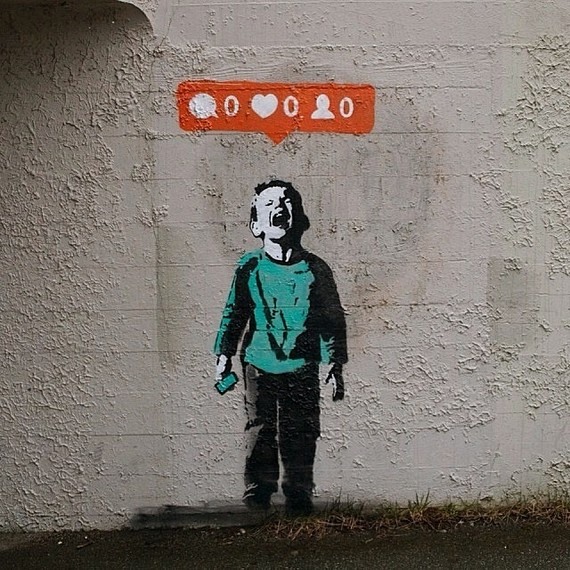Banksy is an infamous artist known by many for his graffiti work around the world. He works anonymously and doesn’t disclose any information about himself which adds to mystery of his work.
He often addresses controversial topics and showcases this publicly. His approach to showcasing his work has made him very sought after, Banksy’s works are now considered as attractions and people often flock to the locations that his works are displayed.

Above is a picture that pokes fun at the current youth of today, showing that all they care for is social media interactions and constantly need online attention. The graphic above the child’s head is representative of Instagram’s notification system.
Banksy’s work is very eye grasping, having controversial topics constantly provoke reactions which has propelled Banksy’s fame. Though the reactions aren’t necessarily positive, often people can be offended and not like some imagery, especially when painted onto a wall. Though this would be an approach I could use for my work, I would have to be careful especially if I am looking at a portfolio to enhance my working profile online.
Gorillaz
Gorillaz are a classic example of illustration integrated with multimedia.
The virtual band were the main inspiration for my ideas. There are a lot of techniques that they use that make it seem like the band are actually within our own world rather than just on screen or on paper.
The above video is an example of how the characters have been integrated within real life, the characters are affected by the environment and light and look like they are fully apart of the scene. I aim to use a similar technique to bring my own illustrations to life and fit them inside of a real world look.
Prior to this project I have attempted to integrate my characters into real world imagery. (Below)
I achieved the look by masking around the window wipers so the characters fit in behind, I used a curves tool to match the colour values to the values of the original image and I also matched the grain and blurriness to fully integrate them in. However, though I feel the final image came out well, I feel I could have more closely matched the lighting and I feel I can be more ambitious with the shots especially if I were to be creating my own world.
As to real world integration I want to take it further and try to use 360 pictures and maybe video and experiment more with making more real to life imagery to sell the idea that my characters are within the real world.





